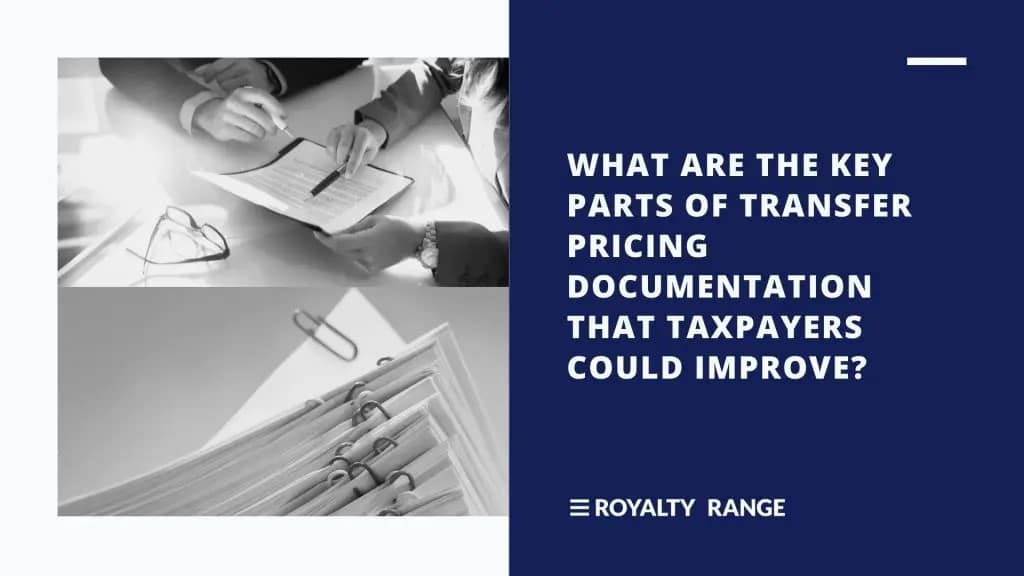An overview of the IRS transfer pricing documentation FAQs

Kris (Kestutis) Rudzika |
July 15, 2021

On April 16, 2020, the Internal Revenue Service (IRS) released a set of Frequently Asked Questions (FAQs) on best practices and common mistakes in transfer pricing documentation.
The aim of the publication is to help taxpayers improve the quality of their transfer pricing documentation so that 1) they avoid penalties; 2) there is a chance of issues being deselected early; and 3) the process is more efficient and cost-effective for taxpayers and examiners.
Here is an overview of transfer pricing documentation and the main points from the FAQs.
What is transfer pricing documentation?
Transfer pricing documentation is a set of files and reports that taxpayers involved in controlled transactions must present along with their annual transfer pricing return. The purpose of the documentation is to show that the taxpayer has complied with the arm’s length principle when setting transfer prices for the controlled transactions, and to show that they took reasonable care in selecting and applying an appropriate transfer pricing method. Any taxpayer that has undertaken controlled transactions with a related entity is required to maintain adequate transfer pricing documentation and provide it in a timely manner.
Transfer pricing documentation and the net adjustment penalty
The IRS outlines the transfer pricing documentation standards that taxpayers must meet in order to avoid a net adjustment penalty, which “may be imposed in the event of a substantial or gross valuation misstatement” (Internal Revenue Code (IRC) section 6662). This penalty is applied when the net IRC section 482 transfer pricing adjustment exceeds the relevant dollar thresholds, as outlined in section 6662(e)(1)(B)(ii). The taxpayer may avoid the penalty if they have met the requirements of section 6662(e)(3)(B) and Treas. Reg. section 1.6662-6.
Other than avoiding penalties, what are the benefits of maintaining adequate transfer pricing documentation?
One benefit of maintaining “robust transfer pricing documentation” is that it saves taxpayers time. If the examining agent can rely on the documentation that the taxpayer provides, then the examining agent won’t require additional time-consuming work from the taxpayer.

In the FAQs document, the IRS states: “High-quality transfer pricing documentation allows the examining agent to rely on the taxpayer’s analysis of functions, risks, intangibles, value drivers, etc., saving both the taxpayer and the IRS time examining low-risk transfer pricing issues. Thus, robust transfer pricing documentation facilitates more efficient transfer pricing risk assessments and examinations for both taxpayers and examiners.”
In some cases, this may result in the early deselection of certain audit issues. But, even if issues are not deselected, it will make the audit more efficient for each party involved.
What is a self-assessment and how does it help with transfer pricing documentation?
The IRS suggests that taxpayers could conduct a self-assessment around their transfer pricing analysis so that they can highlight any potential indicators of non-compliance and address them before submitting their transfer pricing documentation. The purpose of this is to “potentially anticipate and proactively address concerns the IRS might raise”, boosting their chances of submitting compliant transfer pricing documentation and avoiding audit issues.
How should taxpayers show that intercompany transactions are at arm’s length?
The IRS states that, in order to demonstrate arm’s length transfer pricing, taxpayers should comply with section 482 and the regulations outlined there. It says: “related taxpayers must report income based upon intercompany prices unrelated parties would have charged under the same circumstances.” Taxpayers should select an appropriate transfer pricing method to show the prices charged for controlled transactions are the same as they would have been if the transaction had occurred between unrelated parties in an uncontrolled transaction.
In an ideal scenario, taxpayers and the IRS would both have access to the same information for analyzing pricing. In such a case, as long as the taxpayer produces a transfer pricing report following the relevant IRS guidance, the transfer pricing audit would be quick and easy.
However, things are rarely that simple. The IRS gives the example of the difficulty of finding “direct and close comparable companies”. In cases where there are “good, yet imperfect, comparable companies”, the FAQs state that “comparability adjustments should be applied rationally and consistently and follow basic economic principles that are clearly spelled out in the § 482 regulations.” The FAQs go on to say that taxpayers should also include a comprehensive analysis of how and why any comparability adjustments were made.
What are the key parts of transfer pricing documentation that taxpayers could improve?
The FAQs outline some of the areas that are typically not up to scratch in transfer pricing documentation. Below are some of the areas of transfer pricing documentation that taxpayers could strengthen, and some guidance on how they can be improved:
- Industry and company analysis sections – These should be clear and provide context for the role of related parties in the transactions being analyzed.
- Functional analysis narratives – Taxpayers can help the examining agent understand the facts of the functional analysis by supporting it with analysis that links it to the method selection.
- Risk analysis – This should be consistent with intercompany agreements, which establish how risks are allocated. The taxpayer should show how the risk allocations in the controlled transaction compare with the comparable transactions.
- Method selection – Taxpayers can make their analysis of the best method and conclusions stronger and more specific to their case. They should be clear and detailed when discussing the process of selecting and eliminating methods, including searching for internal or external comparables.
- Profit Level Indicator (PLI) conclusion – Taxpayers should strengthen their PLI conclusion by providing an analysis of the selection of the PLI.
- Comparability analysis – When showing the comparability between a controlled and uncontrolled transaction, taxpayers should provide an analysis that addresses the “comparability criteria enumerated in the regulations” (e.g. profit potential, economic conditions, etc.).
- Analysis of risks and functions – The documentation should analyze the impact of any differences in risks or functions between the company being tested and the comparable companies.
- Proposed adjustments – The report should fully explain any adjustments made to the application of a specified method, including the reasons for them.
What should transfer pricing documentation include?
The IRS states that transfer pricing documentation should include:
- A full explanation of the data used in the analysis, with data provided in a functional format (e.g. a spreadsheet) so that examiners can clearly see the taxpayer’s calculations.
- Descriptions of the general business risks of the transaction, as well as detailed accounts of the allocation of these risks among the relevant parties.
- An explanation of how profits were allocated among the parties.

The IRS also suggests that it is useful for transfer pricing documentation to include:
- Functional and risk analyses for the transactions.
- An analysis of any special business circumstances that may have influenced the profitability of the transactions.
- A description of any analysis challenges the taxpayer encountered.
Note that these inclusions will not protect taxpayers from penalties. However, they may make the audit process more efficient and lead to certain audit issues being deselected.
What should be included in the summary of intercompany transactions at the beginning of the transfer pricing documentation?
The IRS suggests that it is helpful to include a summary of the intercompany transactions being analyzed at the beginning of the transfer pricing documentation. This makes the documentation more “user friendly” for the examiners, by helping them quickly understand the transactions being presented. This enables them to focus their review on the “most significant” transactions in the documentation, which can spare the taxpayer a complex, time-consuming audit and potentially lead to certain audit issues being deselected earlier.
The IRS provides an example of a useful intercompany transaction summary here.
Need help preparing OECD-compliant transfer pricing documentation?
Here at RoyaltyRange, we can assist you with transfer pricing documentation package for licensing transactions. We can help you prepare your documentation in a Master file or Local file format, in line with the OECD BEPS Action 13 requirements. The documentation will include an industry analysis, group and company analysis, description of the transaction, functional analysis, selection of method, benchmarking study and financial analysis. To find out more and request a quote for our transfer pricing documentation package, contact us at RoyaltyRange.
Request One Search
We will perform the search and deliver the initial results within hours, at no cost.




